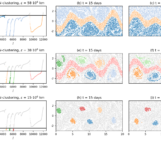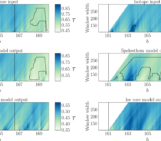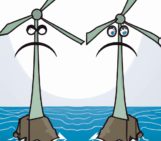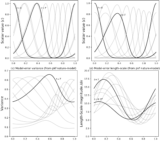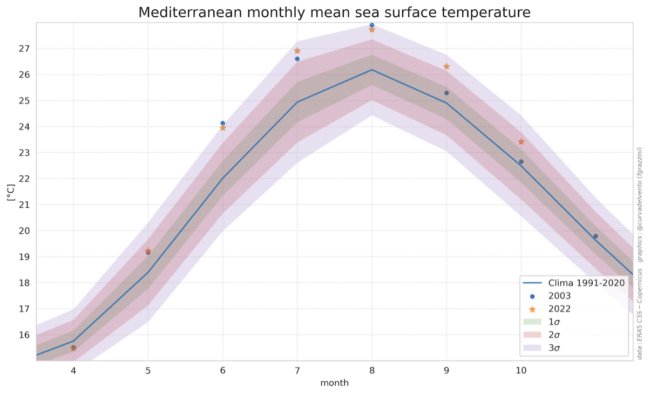
Weather extreme events in the year 2022 are really hitting the Mediterranean basin very hard. Since the beginning of the year we are observing a widespread drought, heatwaves but also severe thunderstorms. Few days before the COP meeting in Sharm-el-sheik we discussed one of the experts of Mediterranean climate, Federico Grazzini, to unveil whether these events can be linked to climate change. Federico has worked in the field of operational meteorology since the early 1990s with important experience abroad, including five years as staff at ECMWF. Currently employed at ARPAE Emilia-Romagna, he is shifting its activity on research, on predictability of extreme precipitation events. On this subject he has established a research project with LMU University in München. He is co-author of the book Fa un po’ caldo. Breve storia del riscaldamento climatico e dei suoi protagonisti (Fabbri Ed., 2020).
Federico, can you tell us in which way the year 2022 has been so far exceptional in the Mediterranean?
This year has shown incredible weather anomalies in Europe. The 40 degrees exceeded for the first time in the UK, the nation with the longest historical series of records in the world (since the late 1600s), immediately comes to mind, however what’s worrying is not only the establishment of new local records, but well-structured, persistent large-scale anomalies associated with them. Analyses from the Copernicus services indicate not only Europe experienced its hottest summer ever, but in the same year also two months broke previous records, August and October, and June the second hottest ever. This is a quite remarkable sequence. The Mediterranean region has been at the heart of these anomalies with far reaching consequences on the hydrological cycle: widespread drought, vegetation stress and significant marine heatwave. The impacts were so widespread that it requires a good memory effort to keep track of all of them. They have been adding up month by month. One for all, the exceptional glacial melt on the Alps which took away in just a few months between 4 to 5 meters of ice, as reported by Swiss and Italian glacier mass balance observations . For many small glaciers, with remaining 15 to 20m of ice depth, three more summers like this last one, and they will disappear forever. We should remember that Alpine glaciers represent the water tower of whole continental europe. Moving from the mountains to the depths of the sea, here as well we notice very significant anomalies. The temperature of the Mediterranean Sea has remained exceptionally high (and still is), at values even higher than those that caused the 2003 marine heat wave, the strongest ever recorded. This has important implications on the ecosystems and availability of thermodynamic energy and water vapor for precipitation.
Can this be directly linked to climate change? And how?
Near real-time attribution studies (see for example World Weather Attribution (WWA) initiative) clearly indicated the role of global warming in making this year’s heat-waves and drought more intense, via the strengthening of positive soil feedback for example. Temperature increase is amplified by the higher atmospheric evaporative demand that increases even more the drying of soil. This process was important this year with very dry soils already in spring.In addition to that, we observed a frequent northerly expansion of subtropical high pressure system toward the mediterranean region, especially during spring and summer months. This year this configuration has been almost a constant from May onwards. Although the attribution to changes in the dynamical drivers are less robust than thermodynamic ones and soil feedbacks, the increased frequency of subtropical high pressure over the Mediterranean is totally consistent with the expansion of the Hadley cell, observed since the 1980s, and predicted to continue in climate change scenarios.
Some climate denialists still believe that the current warming is an effect of the long-term natural variability of the climate system. How do you rule out this hypothesis?
It’s really hard to believe that natural variability can produce such a sequence of almost continuous growth of temperature without any forcing. Actually, from year 2000s natural variability has almost “disappeared” in front of the trend. Talking about temperature: nine of the last ten years rank among the ten warmest years on record, and this year will stay well in the top ten despite the persistence of cold “La Nina” conditions. Personally, I can’t imagine any internal natural phenomena able to explain such a strong change in such a short time other than changes in atmospheric composition and corresponding increase of greenhouse gases.
As an Italian scientist, what are the hotspots of climate change in your country and what are the major risks for the population and the economy?
I must say I’m twofold worried for my country: its geographical position and morphology makes our country exposed to rapid climatic changes and extreme events more than neighboring countries; second because the general public and the politicians has not yet gained a full consciousness of the unprecedented scenarios that we would face. We already mentioned recurrent and persistent drought conditions. This year, the Po river discharge for three months in a row was below the alarm level for salty water intrusion which in fact arrived up to 40km inland. A new record of minimal discharge was set (~100 m3/s), half of the value of the previous record (in 2006) and about ten times smaller than the mean climatological summer discharge. Practically, cities like Ferrara had seriously risked to remain without water for the combined effect of low river water level and salty water ingression. Hydroelectric power was down by 40% this year and many gas powered thermoelectric power stations also had to stop in summer due to lack of cooling water. The water flowing in the Po river is also at the core of the rich agricultural and livestock breeding economy of the Po valley which needs more and more irrigation due to higher evaporative demand of the atmosphere. If the water stops flowing from the mountains because soon many glaciers will be gone, more than 40% of the country’s GDP is at risk. On the opposite end, while the precipitation shows a decline in almost every season (in a statistically significant way) autumn precipitation is showing a moderate increase, mostly due to a higher frequency of extreme rainfall events. Potential higher water vapor content due to higher air masses temperature, in this season becomes fully available, increasing precipitation intensity. In Italy every year extreme precipitation events produce millions of euros of damages and loss of lifes. The last one hit the Marche region in mid september, pouring down six months worth of rain in about six hours and causing 12 casualties.
Can we still hope for a brighter future?
Yes, I think there is hope, not to reverse the trend but at least to slow it down. As scientists we should do our best to explain to people, administrators and politicians that if we don’t react quickly as society, fastly reducing emissions, we would face even more serious consequences compared to what we are already seeing now. Adaptation will not eventually be manageable any more because it is too expensive if we don’t manage to soon reduce emissions . So there is only one way, to engage even more to fight the climate crisis, trying to also spontaneously joint efforts amongst scientists to reach more and more people.

